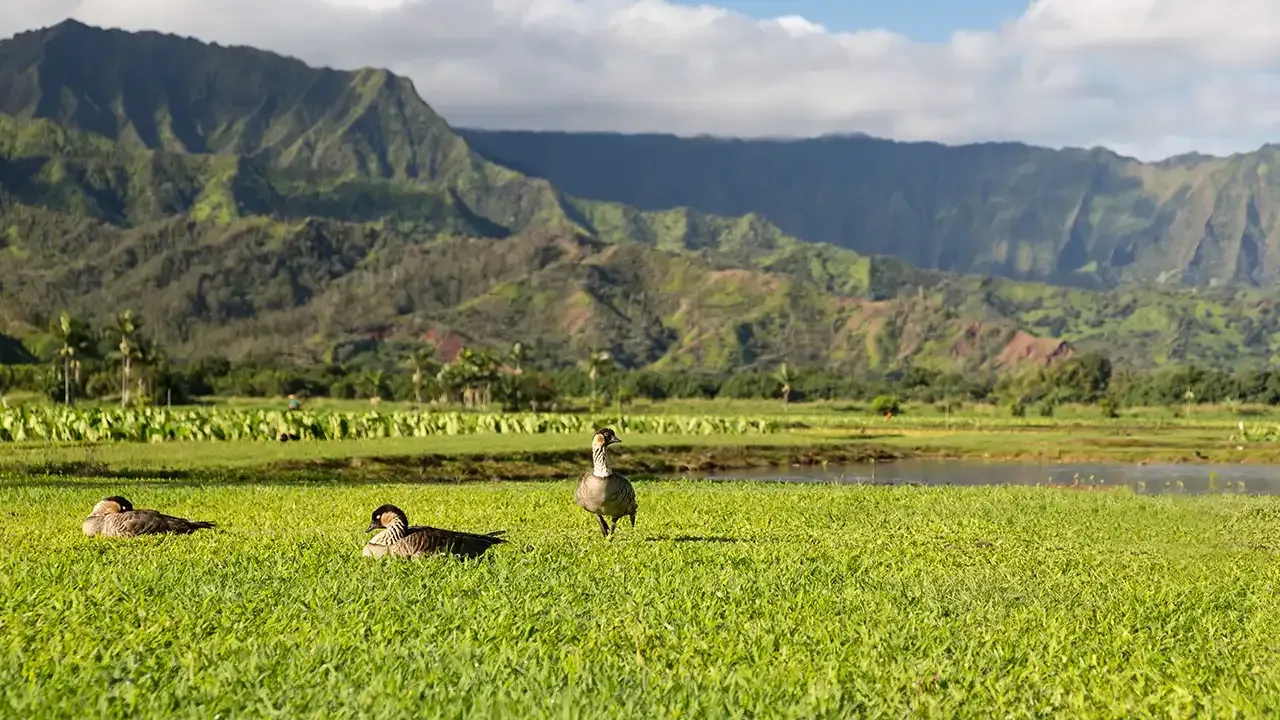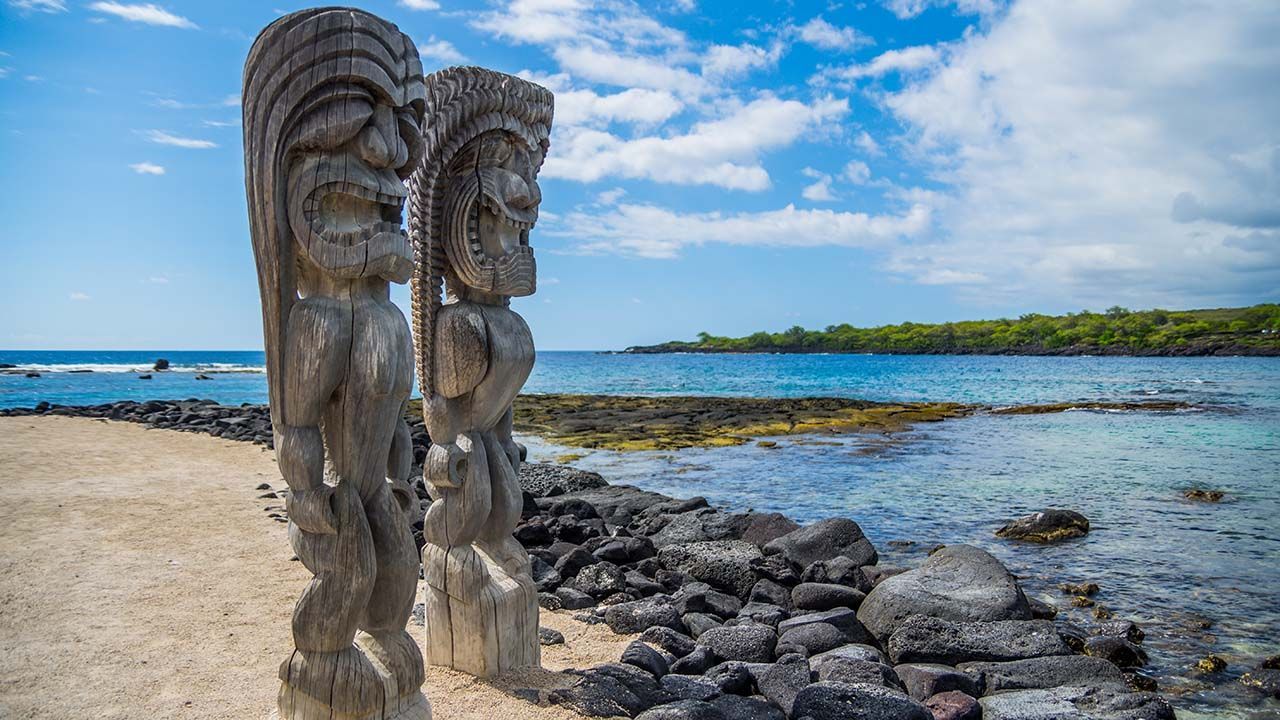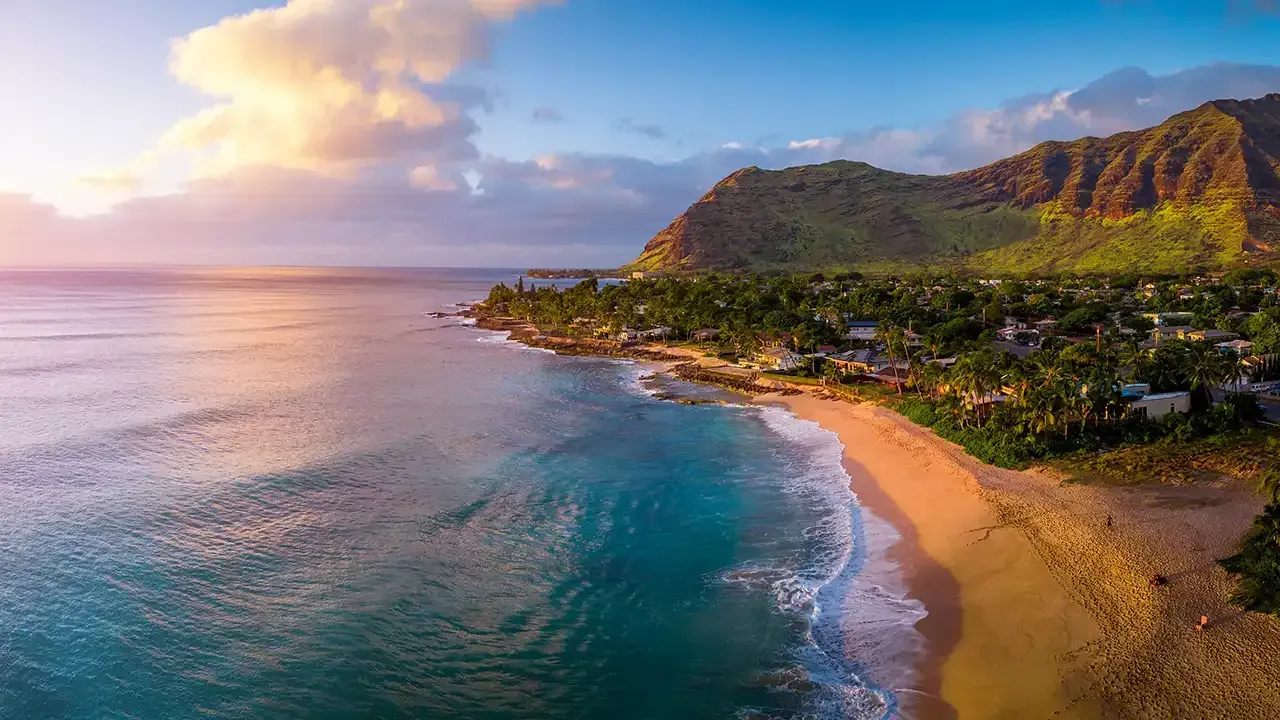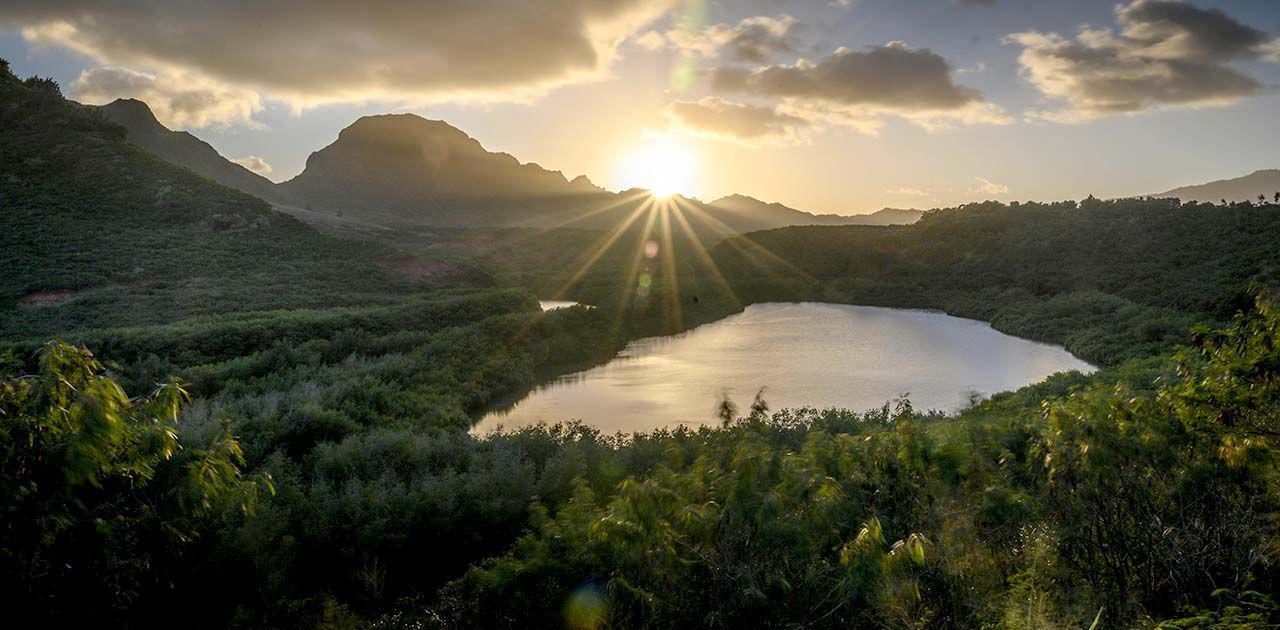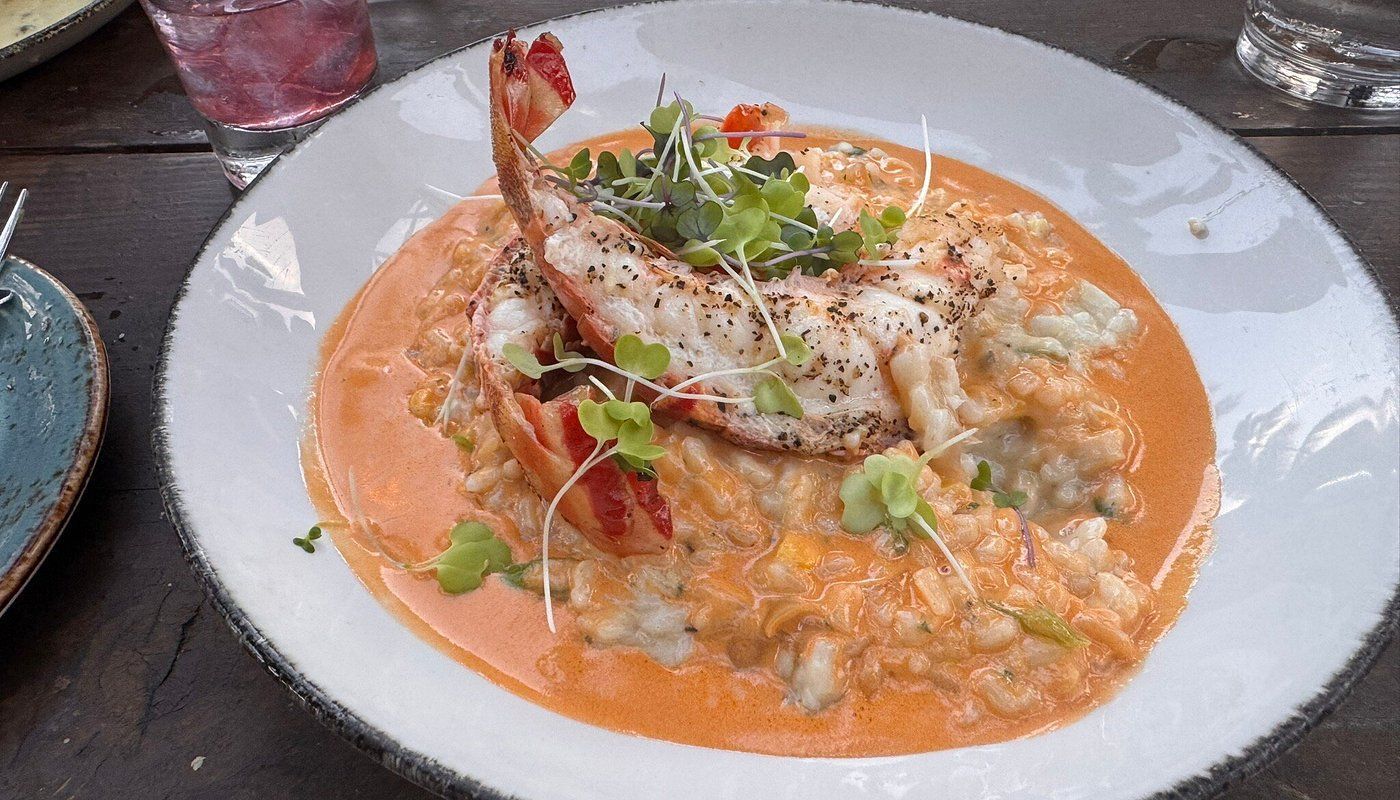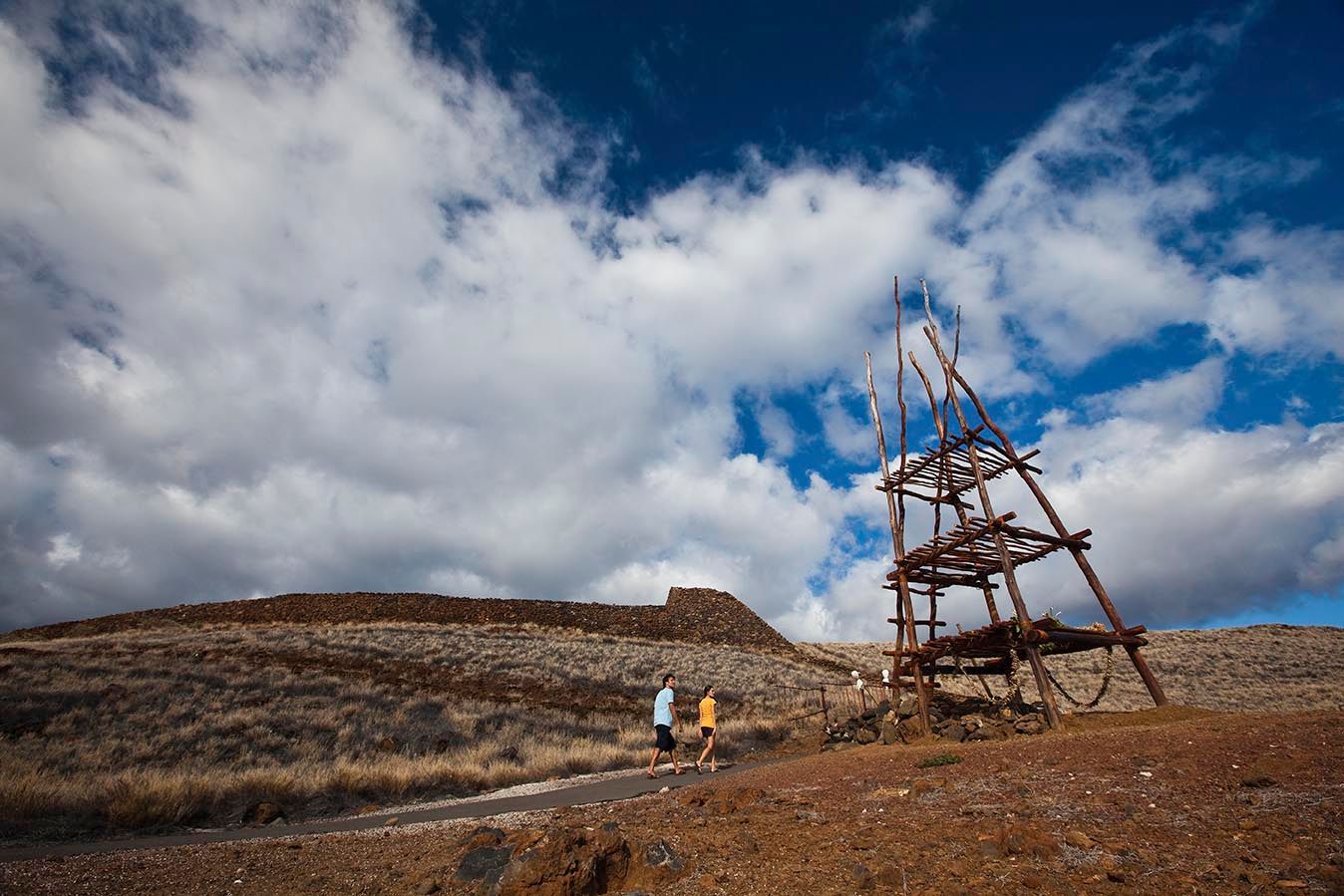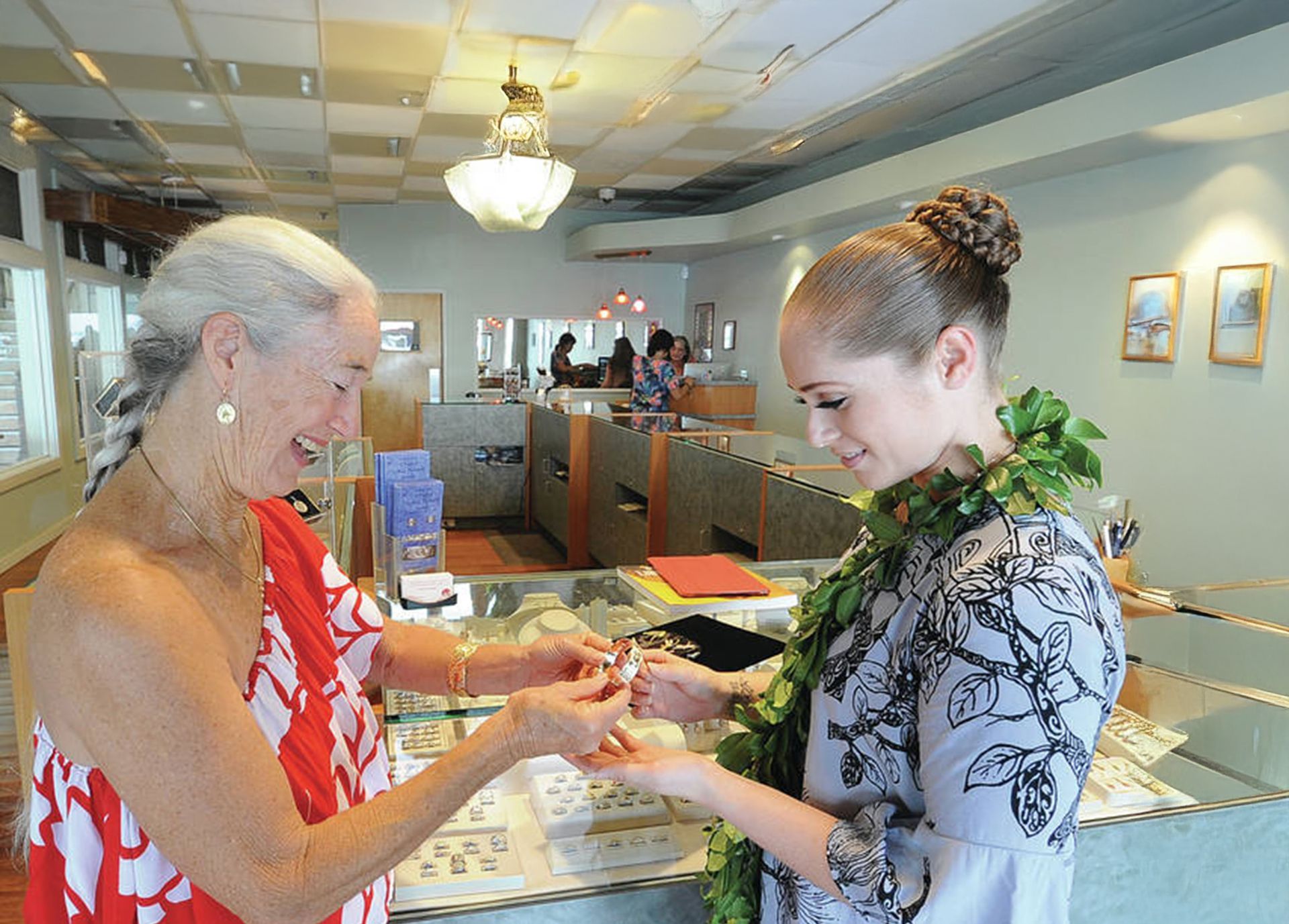Hawaiian Food: A Taste of Real Hawaii
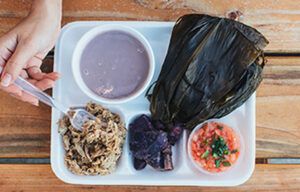
You can learn a great deal about the culture and heritage of a new travel destination from the food that locals eat. A state or country’s cuisine is often inspired by the people who inhabit it, the locals who pour their hearts and souls into the land and shape the way it’s perceived. And as one of the most diverse melting pots in the world, Hawaiʻi boasts a gourmet spread of unique delicacies influenced by Hawaiian, Japanese, Chinese, Korean, Filipino and Portuguese cultures, just to name a few.
If you’re a first-time Hawaiʻi visitor, you may be a little confused—and possibly turned off—by the abundance of unfamiliar, colorful foods with names you’ve never heard of before. Here’s a breakdown of the local staples you’ll find at most Hawaiian restaurants around the islands.
What is…
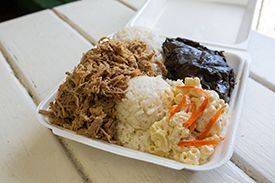
Translated as “to bake in an underground oven,” kalua was once the traditional cooking method in Hawaiʻi, and is still employed today by some lūʻau around the islands. To make kalua pig, a full pig is customarily roasted in an imu, or underground oven, and wrapped in ti leaves while it smokes. You can also make kalua pig with liquid smoke over the stove. Tasty and juicy, salty and smokey, kalua pig is a staple in any Hawaiian mixed plate, and pairs well with cabbage and white rice. PC: HTA / Tor Johnson.
Lau Lau?
Early Hawaiians also made good use of the imu when making lau lau, another Hawaiian delicacy. Today, lau lau is made of chicken, beef, pork or fish wrapped in bright green luau, or taro leaves and smoked until fresh. Scents and flavors of the luau leaves soak into the center of the lau lau so that when you dip your fork into the dish, the meats taste salty, smoky and reminiscent of the greens. Eat with a side of poi or lomi salmon! And speaking of lomi salmon…
Lomi Salmon?
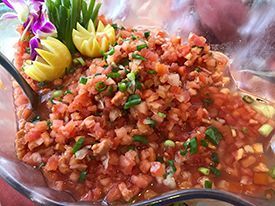
Think pico de gallo, Hawaiian style. Made from the simple ingredients of raw salmon, tomatoes and green and round onions, lomi salmon is a popular Hawaiian side dish that’s served chilled and pairs well with poi. Order any Hawaiian plate on the island, and you’re likely to find it accompanied with a chilled and refreshing scoop of lomi salmon!
Chicken Long Rice?
Despite its name, chicken long rice doesn’t actually contain any rice. Instead, this Hawaiian staple features Chinese bean-thread, or cellophane, noodles that soak in a rich chicken broth and seasoned with ginger, garlic, onions and soy sauce. Add moist, shredded chicken into the mix, and you have a warm and delicious side dish to accompany your Hawaiian plate.

Poi?
From its bizarrely purple color to its loose, paste-like texture, poi is a local dish that’s often dismissed by visitors and locals alike. Poi is certainly an acquired taste, but don’t let its strange features discourage you from sampling it at least once. Made from the Hawaiian taro plant, poi is served either fresh and sweet or fermented and sour. Just as people have their taste preferences, so too do they have their desired consistencies. Poi aficionados use the “finger” test, using one, two or three fingers to indicate the ease of scooping a mouthful of poi. Sample poi with lomi salmon, soy sauce, salted fish or on its own. Looking for an ancient Hawaiian experience? Check out a poi-pounding demo at cultural centers, museums and lūʻau around the islands!
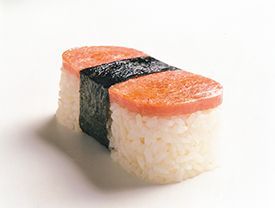
Spam Musubi?
This is the ultimate local meal on the go! Though not regarded as a typical Hawaiian dish, spam musubi is as local as it gets. All you need to make it is three ingredients—rice, nori and Spam, Hawaiʻi’s favorite canned meat! Popular add-ons are egg, teriyaki sauce, shiso leaves and pickled radish. Don’t turn your nose up at this beloved finger-food; sample the Hawaiian delicacy at least once!
Haupia?
Haupia is like Jello with a Hawaiian twist. Coconut milk is the main ingredient, and when prepared it tastes sweet and creamy. Its unique, gelatin-like consistency is achieved by mixing cornstarch, warmed coconut milk, water and sugar. The mixture is then poured into a pan and chilled until it achieves its ideal texture. Eat it by itself, or sample it in popular pie flavors like chocolate haupia, sweet potato haupia and haupia cream.
So the next time you have the opportunity to try one of these island delicacies, don’t say no—you never know what your next favorite food will be until you try! And now that you know what poi, lau lau and kalua pig are,check out some of our favorite places to eat and indulge!

